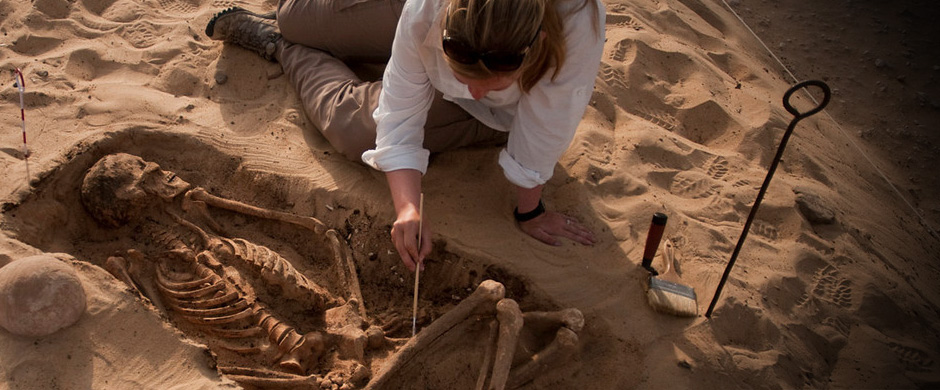 | In the Field
| In the Field

Current Institute Projects at Abydos
Abydos Cemeteries
Beginning in the 3rd millennium BCE enormous cemetery fields developed on the desert margins near the ancient town of Abydos, and the Institute of Fine Arts is exploring these important components of the site. Burials were made in underground tombs of a wide range of sizes and configurations, as well as in simple surface interments, with or without a wooden coffin. Tombs frequently had a brick offering chapel on the surface, which originally contained stone offering stelae or statues of deceased persons, which were the focus of the funerary offering cult for the deceased. Although most tombs at Abydos were robbed in antiquity, much important material is left, including the physical remains of the ancient inhabitants of Abydos themselves. The range exhibited by tombs and their surface chapels, both in terms of size and elaborateness, as well as the patterns of surface interments, testify to the presence in the cemeteries at Abydos of persons from every level of ancient Egyptian society. The cemeteries at Abydos were not only places for the burial of the dead, but also settings in which the dynamics of the society of the living were expressed and defined, and excavation in the cemeteries provides an important window on both life and death in ancient Egypt.